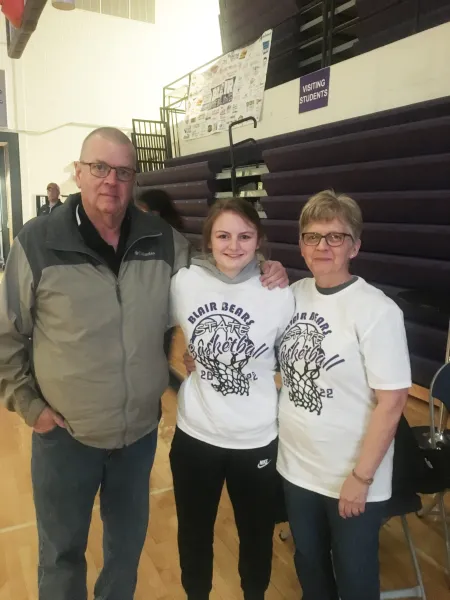Arley Larson: Heart Failure

With a long and honored legacy of coaching — 49 years for boys basketball and 28 years for girls basketball — Arley Larson is not the type of person to give up easily. So when he was offered the opportunity to participate in a clinical research trial at the Minneapolis Heart Institute Foundation® (MHIF) for a new device to treat his worsening heart failure, he naturally didn’t hesitate at all.
“I’ve taught and coached all my life, and I farm as well, so I’m still real active,” said Arley, 70, of Ray, North Dakota. “A couple years ago, I had a small stroke and so I retired from teaching. But I still farm and coach full time, so I wasn’t ready to sit in the chair and wait for the funeral home. If there’s something that can keep you alive longer, why wouldn’t you look at it?”
Like many people with heart failure, the ventricles of Arley’s heart were pumping in an uncoordinated manner and as a result, he was always tired and short of breath. His electrophysiologist had told him he needed both an implantable cardioverter defibrillator (ICD) and a cardiac resynchronization therapy (CRT) device, which sends small electrical impulses to the ventricles to help them beat together in a more synchronized pattern. In traditional CRT systems, these electrical impulses are delivered to the heart via a thin wire (called a lead), which is threaded through the veins and into the heart. His electrophysiologist was able to implant the ICD, but in Arley’s case he was unable to place the left ventricular lead for the CRT in the coronary sinus, and there were no other viable options for placing the lead.
Arley made the decision to see the electrophysiology specialists at Minneapolis Heart Institute® at Abbott Northwestern Hospital, who conduct world-class research through the Heart Rhythm Center at the Minneapolis Heart Institute Foundation. Dr. Charles Gornick, an electrophysiologist and MHIF researcher, reviewed his case to see if they could surgically place a left ventricular lead, but the procedure would be invasive and require a long recovery. Dr. Gornick and Arley decided to explore additional options and they learned he was a good candidate for a clinical trial studying a new CRT system that is wireless. Instead of needing to implant a lead in his coronary sinus, the MHIF research team in early 2022 was able to implant a tiny, wireless electrode about the size of a grain of rice directly into the left ventricle of Arley’s heart.
A month after his procedure, Arley was positive about the entire experience and his progress. As a clinical trial participant, he’ll continue to have thorough follow-up care with the MHIF research team over five years to ensure his new device is working as it should.
“I’m feeling pretty good and everything has been A-rated,” said Arley. “I was very pleased with how they educated us on the technology, how they did the procedure, and the follow-up care. I couldn’t have asked for anything better. I was doing a lot of walking the last few years, hunting with my dog and doing everything at the farm, but it had gotten to the point I couldn’t do those things anymore because I just didn’t have the energy. I’m hopeful I’ll be able to get back to all that.”
The MHIF Heart Rhythm Center is one of only a handful of research centers nationwide that was chosen to participate in the trial for the promising new wireless CRT technology. Through research into innovative devices, drugs and other therapies, researchers are helping improve and expand treatment options for millions of patients with heart rhythm disorders worldwide, just like Arley.

